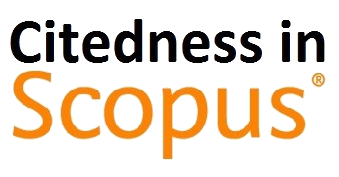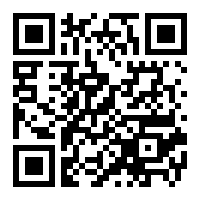Sentiment Analysis of Covid-19 As A Social Media Pandemic
(1) Informatics Engineering Study Program, Politeknik Pos Indonesia
(2) Informatics Engineering Study Program, Politeknik Pos Indonesia
(*) Corresponding Author
Abstract
A large amount of information about Covid-19 that spreads quickly can lead to a perception of opinion and sentiment for those who read it. This research studies how text networking is formed, sentiment analysis and topics modelling that is widely discussed related to the Covid-19 theme. The text networking analysis was carried out on data taken from 4 different times, namely on 26 March, 29 March, 28 June and 23 July 2020 giving the result that the largest edge, nodes and modularity were in the conversation data on July 23, 2020. Sentiment analysis shows how the public responds to the Covid-19 pandemic. Sentiment analysis from tweet data in March 2020 showed 51% as positive sentiment and 49% as negative sentiment, with an accuracy rate of 0.7586, specificity 0.6667, prevalence 0.5862. Then tweet data in June 2020 showed 59% as negative sentiment and 41% as positive sentiment, with an accuracy rate of 0.6486, specificity 0.6111, prevalence 0.5135. Analysis of topic modelling has succeeded in collecting words related to certain topics, such as the data on March 26, 2020, representing talks related to the topic of "doing activities from home", "health", and "government policy". The data on March 29, 2020, represent talks related to the topic of "activities from home", "expression of feelings", "new habits". The data on June 28, 2020, represent talks related to the topic of "health protocol", "social assistance", "health". And on July 23, 2020 data represents talks related to the topic of "data security", "fine policy", and "policy".
Full Text:
PDFReferences
WHO, “WHO Director-General’s opening remarks at the media briefing on COVID-19 - 11 March 2020,” 2020. [Online]. Available: https://www.who.int/dg/speeches/detail/who-director-general-s-opening-remarks-at-the-media-briefing-on-covid-19---11-march-2020.
Sharan Kumar Ravindran, Mastering Sosial Media Mining With R. Birmingham: Packt Publising, 2015.
Gloria, “Sistem Pencegahan dan Pengendalian Penyakit Perlu Diperkuat,” 2020. [Online]. Available: https://ugm.ac.id/id/berita/19075-sistem-pencegahan-dan-pengendalian-penyakit-perlu-diperkuat. [Accessed: 28-Feb-2020].
M. R. Aji, “Terawan: Panik Hadapi Virus Corona Justru Turunkan Imunitas Tubuh,” 2020. [Online]. Available: https://nasional.tempo.co/read/1314529/terawan-panik-hadapi-virus-corona-justru-turunkan-imunitas-tubuh/full&view=ok. [Accessed: 02-Mar-2020].
C. Prianto, N. H. Harani, and I. Firmansyah, “Analisis Sentimen Terhadap Kandidat Presiden Republik Indonesia Pada Pemilu 2019 di Media Sosial Twitter,” vol. 3, no. 4, pp. 405–413, 2019, doi: 10.30865/mib.v3i4.1549.
N. L. W. S. R. G. Anjar Wanto, Muhammad Noor Hasan Siregar, Agus Perdana Windarto, Dedy Hartama and C. P. Darmawan Napitupulu, Edi Surya Negara, Muhammad Ridwan Lubis, Sarini Vita Dewi, Data Mining Algoritma & Implementasi, 1st ed. Penerbit Yayasan Kita Menulis, 2020.
Badan Pengembangan dan Pembinaan Bahasa, “Kamus Besar Bahasa Indonesia,” Badan Pengembangan dan Pembinaan Bahasa, 2012. [Online]. Available: https://kbbi.web.id/sentimen.
V. S. Dsouza, F. H., & Ananthanarayana, “Document classification with a weighted frequency pattern tree algorithm. In Data Mining and Advanced Computing (SAPIENCE),” IEEE, pp. 29–34, 2016.
F. Achua, L.F.C., Managing Individual Are Group, Behavioral in organization. Ney York: McGraw Hill, 2004.
D. Paranyushkin, “Identifying the Pathways for Meaning Circulation using Text Network Analysis,” Nodus Labs, no. December, p. 26, 2011, doi: citeulike-article-id:11684328.
R. R. A, “Topic Modelling Menggunakan Latent Dirchlect Allocation,” 2018. [Online]. Available: https://medium.com/@ranggaantok/topic-modelling-menggunakan-latent-dirchlect-allocation-3fdf979ffd05.
I. M. K. B. PUTRA, “Analisis Topik Informasi Publik Media Sosial di Surabaya Menggunakan Pemodelan Latent Dirichlet Allocation (LDA),” J. Tek. ITS, vol. 6, no. 2, 2017, doi: 10.12962/j23373539.v6i2.23205.
WHO, “Question and Answer For Public,” 2020. [Online]. Available: https://www.who.int/indonesia/news/novel-coronavirus/qa-for-public. [Accessed: 15-Mar-2020].
Dinkes DIY, “Mengenal Istilah Penyakit Endemi, Pandemi, dan Darurat Corona,” 2020. [Online]. Available: https://www.labkes.jogjaprov.go.id/berita/5. [Accessed: 30-Sep-2020].
cran.r-project, “rtweet: Collecting Twitter Data,” 2020. [Online]. Available: https://cran.r-project.org/web/packages/rtweet/index.html.
cran.r-project, “readr: Read Rectangular Text Data,” 2020. [Online]. Available: https://cran.r-project.org/web/packages/readr/index.html.
cran.r-projec, “tm: Text Mining Package,” 2020. [Online]. Available: https://cran.r-project.org/web/packages/tm/.
cran.r-project, “NLP: Natural Language Processing Infrastructure,” 2020. [Online]. Available: https://cran.r-project.org/web/packages/NLP/index.html.
cran.r-project, “wikipediatrend: Public Subject Attention via Wikipedia Page View Statistics,” 2020. [Online]. Available: https://cran.r-project.org/web/packages/wikipediatrend/index.html.
Kompas.com, “200 vaksin corona diuji, ini yang paling potensial,” 2020. [Online]. Available: https://kesehatan.kontan.co.id/news/200-vaksin-corona-diuji-ini-yang-paling-potensial. [Accessed: 30-Jun-2020].
R. H. Sucipto, A. Alamsyah, S. Si, and M. Sc, “Analisis Jaringan Teks Berdasarkan Social Network Analysis Dan Text Mining Untuk Mengetahui Persepsi Kualitas Merek Pada Konten Percakapan Di Media Sosial Twitter ( Studi Pada Pt . Indosat Tbk . Dan Pt Telkomsel ) Text Network Analysis Based On Social Net,” Issn, vol. 3, no. 1, pp. 93–100, 2016.
DOI: https://doi.org/10.30645/ijistech.v4i1.90
Refbacks
- There are currently no refbacks.
Jumlah Kunjungan:
Published Papers Indexed/Abstracted By:












